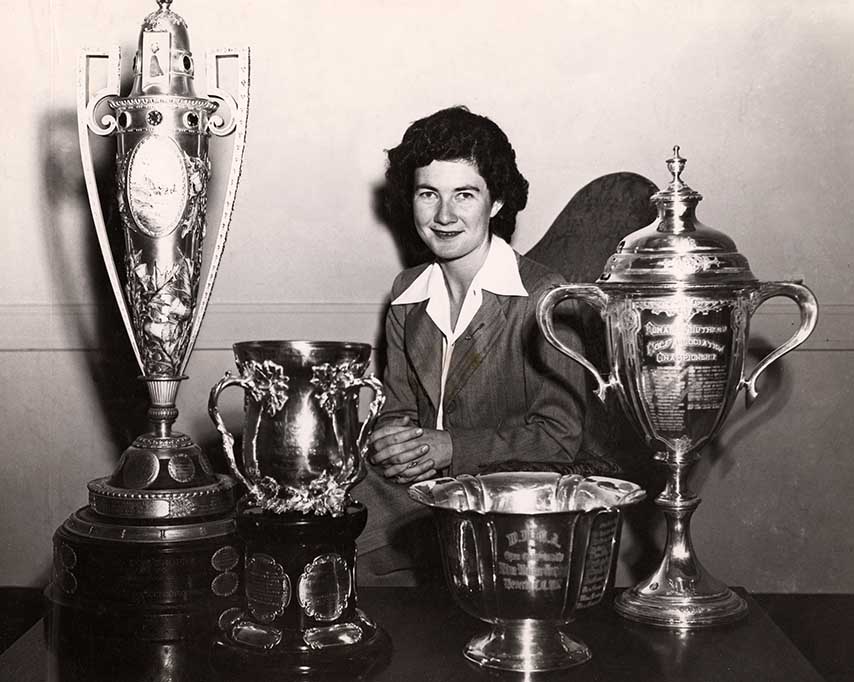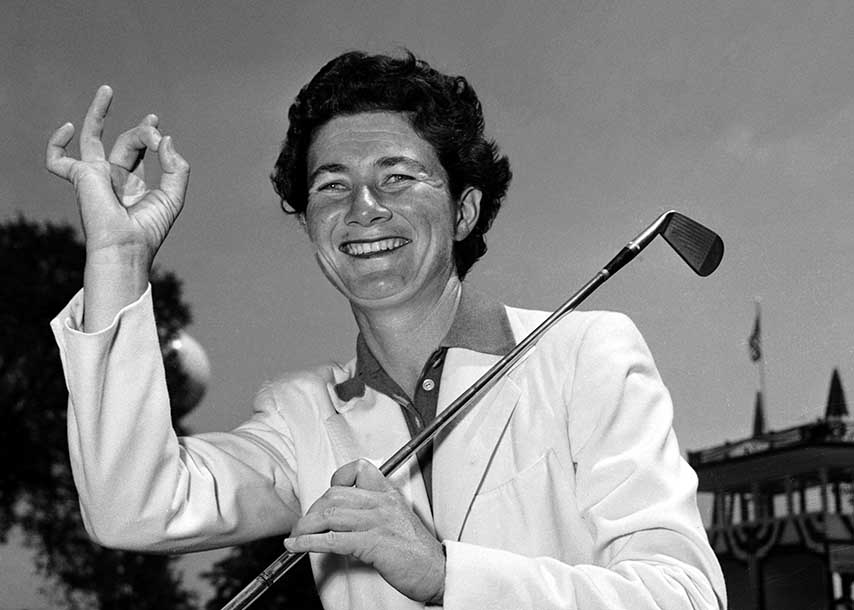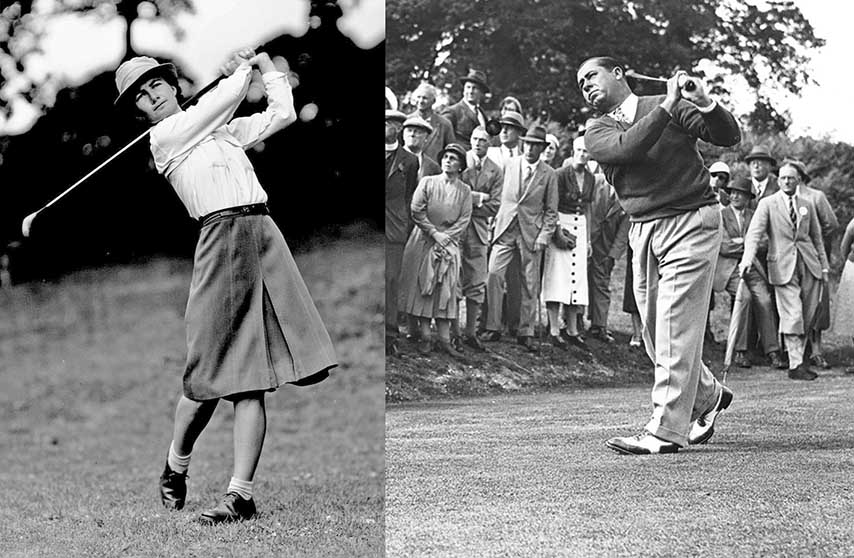With 11 victories each, two legendary figures in the history of golf, Walter Hagen and Louise Suggs, occupy the third step on the podium of leading Grand Slam winners.
Another golfing legend, Gene Sarazen, once said that all professional golfers should give a silent thank you to Walter Hagen every time they held a cheque between their fingers. “Walter Hagen is the one who made professional golf what it is,” Sarazen said.
In fact, he did try to elevate the treatment and status of professional golfers during an era when many clubs would not allow professionals to enter their clubhouses.
One of the more famous anecdotes about Hagen, known as The Haig, referred to his renting a Rolls Royce and parking it outside the clubhouse during a tournament in England, to use as a dressing room after the club refused to allow him to use its own dressing rooms.
It was Hagen who attracted huge crowds to tournaments and who began to receive large amounts of money to take part in exhibition events, and he was also the first sports star to win one million dollars in his career. In addition, he was a pioneer in charging commercial brands for publicising their products. To that end, he charged 500 dollars a year for each club in his bag during tournaments. And Hagen, who was a shrewd businessman, carried 22 clubs in his bag instead of the traditionally accepted 14 – so he collected an extra 4,000 dollars for his astuteness.

Hagen, who was born in 1892 in Rochester (New York) and died in 1969 - at 76 - in Michigan, was, without doubt, one of the greatest golfers in the history of the game. His victories on the US Tour totalled 44 and his Grand Slam wins, 11. Only Jack Nicklaus and Tiger Woods have won more majors. Hagen won the US Open twice, the first time while still just 21; the British Open four times; and the US PGA Championship on five occasions (four of them consecutively). He was only thwarted in the US Masters. He also won five Western Opens, an event considered at the time to be a major.
As happened often in those days, Hagen left school at 12 and became a caddie at one of the clubs near his home, Rochester Country Club, where years later he was to work as a professional. The young Hagen worked at other jobs until he could, at last, live on golf alone. He was, for example, a taxidermist, and he played baseball as a semi-professional, once receiving an invitation to join one of the major league teams – which he declined so he could compete in a golf tournament. Walter won the tournament: he was 21 and it was nothing less than the US Open.
As well as these sporting successes - Hagen captained the US team in the first six Ryder Cups and entered the World Golf Hall of Fame in 1974 – he was also well known for the glamour he introduced to the world of golf. He was a consummate dandy, always smartly dressed in tournaments. He was, in fact, the first sports star to be included in the list of Best-Dressed Americans.

His life was colourful both on and off the course. He won a lot of money – and squandered handfuls. He stayed in the best hotels, organised stunning parties, and rented amazing limousines to take him to tournaments – parking them next to the first tee. “I never wanted to be a millionaire,” he said. “I just wanted to live like one.”
In spite of his excellent results, he had an inconsistent swing and his drives weren’t the best among his contemporaries. However, his magnificent short game overcame any shortcomings with his long one.

Louise Suggs: One of the Original Stars
Louise Suggs was one of the first female professional golf stars. Born in 1923 in Atlanta, Georgia, she showed exceptional golfing ability from an early age. Suggs won the US and British Amateur championships, two US Women’s Opens, an LPGA Championship and other majors. In all, she won 58 tournaments, including 11 Grand Slams. After seeing how powerful she hit the ball with her driver, actor Bob Hope gave her the nickname Miss Sluggs.
Overshadowed only by the popularity of Babe Zaharias, Suggs won often and in record-breaking fashion. In the 1949 US Women’s Open, she set the 72-hole record of 291 and won by 14 shots over Zaharias. This record margin remained intact for nearly 50 years on the US LPGA Tour, until Cindy Mackey matched it in the 1986 Master Card International.
Four years later, Suggs broke her own scoring record, winning the 1953 Tampa Open with a 288 total. Only Tiger Woods, with a 15-shot victory in the 2000 US Open, has won a major – men’s or women’s – by a greater margin than Suggs’ 14 shots in that 1949 US Open.
In the prologue of the book written by Suggs, “Par Golf For Women”, Ben Hogan said, “If I were to single out one woman in the world today as a model for any other woman aspiring to ideal golf form it would be Miss Suggs. Her swing combines all the desirable elements of efficiency, timing and coordination. It appears to be completely effortless. Yes, despite her slight build, she is consistently as long off the tee and through the fairway as any of her feminine contemporaries in competitive golf. And no one is ‘right down the middle’ any more than this sweet-swinging Georgia miss.’’
Suggs had the advantage of being raised in a golf environment: her father John, a former pitcher with the New York Yankees and Atlanta Crackers, owned and managed a golf course. She won the 1940 and 1942 Georgia State Amateurs; the Southern Amateur and Western Amateur twice each; and the North and South three times. She won the 1946 Titleholders, at the time considered a major, as an amateur; and the US and British Amateurs in 1947 and 1948, respectively.

Having accomplished as much as she could in the amateur ranks, Suggs turned pro – her first victory being the record-setting performance over Zaharias in the US Open. The win was especially sweet for Suggs, who resented the massive publicity given to Babe. However, it was because of Babe that sponsors became interested in ladies’ golf. With the help of golf promoter Fred Corcoran, Suggs, Zaharias, Patty Berg, Marilynn Smith and Betty Jameson helped found the LPGA in 1950. Berg was the first president, succeeded by Suggs from 1955-1957.
Suggs’ career came to a sad end over a question of principle. In 1962, she was fined $25 for failing to play in an event in Milwaukee – one she had signed up for. Feeling she had been wronged, she never played a full schedule again. Said Betsy Rawls, who was president of the LPGA at the time, “She was at the height of her career and in her prime when she quit. It was hard for me to understand that kind of thinking. I would have paid for her myself, although the money was nothing to Louise. I forever regretted it for her, and I thought it was one of the saddest things in the LPGA’s history.’’
Suggs’ most successful year had been 1953, when she won eight times. In 1952, 1955 and 1961, she collected five titles each season; headed the money list twice; and also won the Vare Trophy for best player of the season on two occasions. Her last LPGA victory came in 1962.
She was the first player to complete the LPGA Tour Grand Slam, with wins in the four majors of that era. Her 11 triumphs in the majors came over 14 years, between 1946 and 1959. She won the US Open in 1949 and 1952; the Women’s Western Open in 1946, 1947, 1949 and 1953; the Titleholders Championship in 1946, 1954, 1956 and 1959; and the LPGA Championship in 1957.
“She was bound to be a winner, and she was,” said Ben Hogan.
Suggs, who was elected to the World Golf Hall of Fame, said of the sport that became her life: “Golf is very much like a love affair. If you don’t take it seriously, it’s no fun, but if you do, it breaks your heart. Don’t break your heart, but flirt with the possibility.” For Louise, the most simple – and at the same time most important – lesson to learn in golf was mental discipline.
The trophy won by the leading rookie on the LPGA Tour is named alter Louise Suggs.




